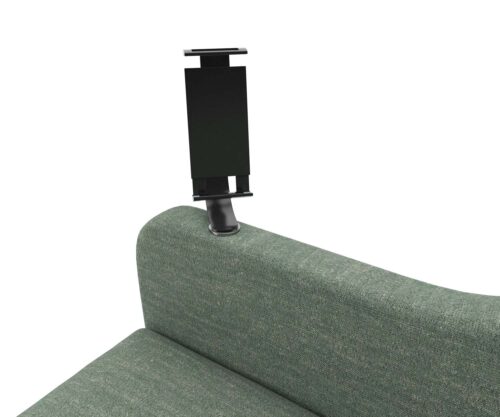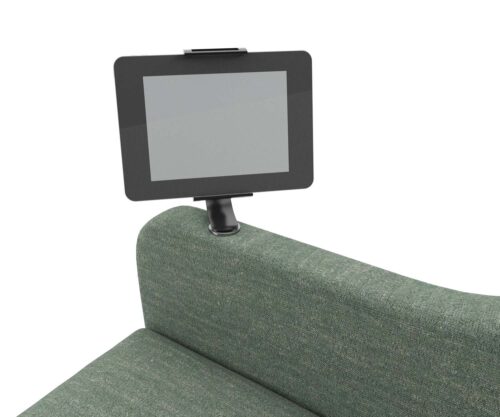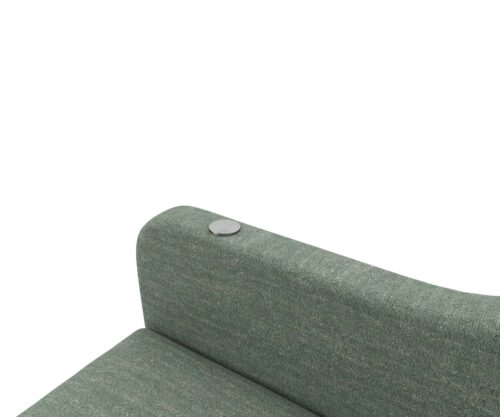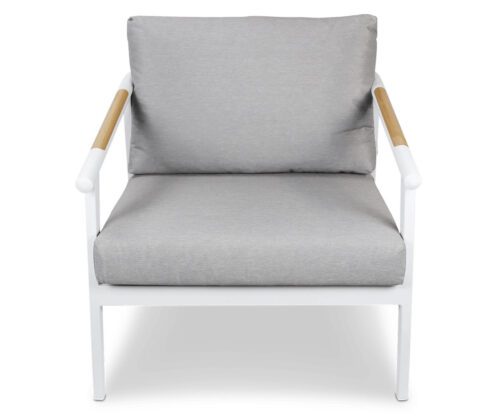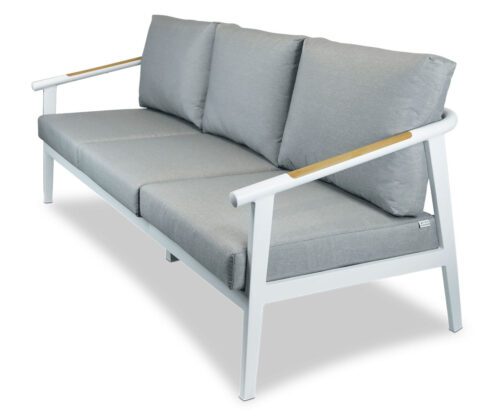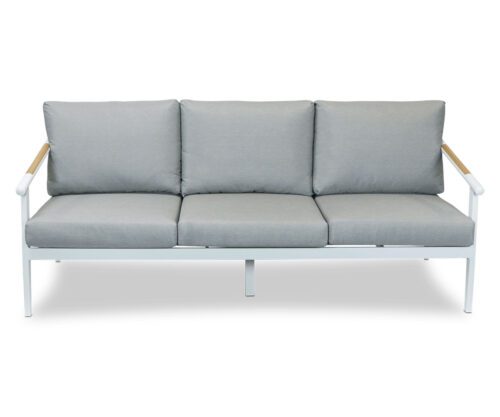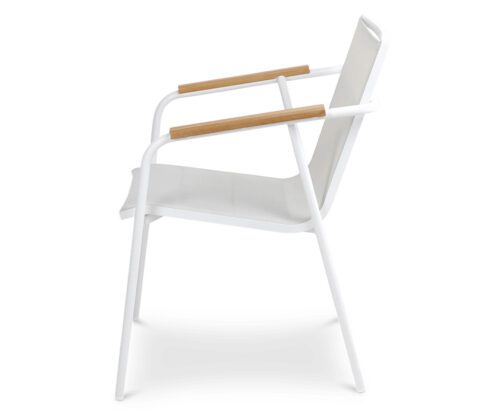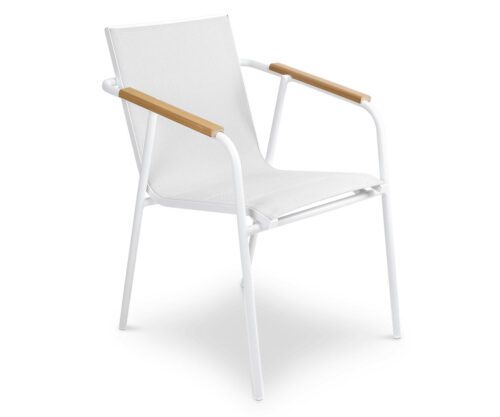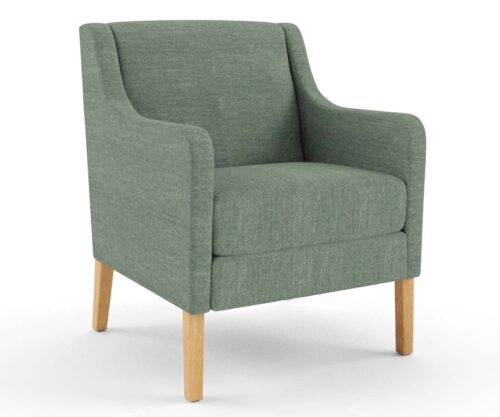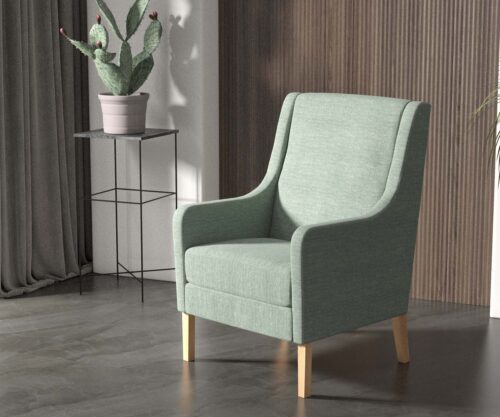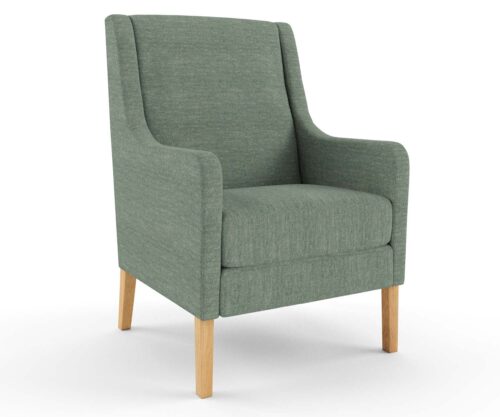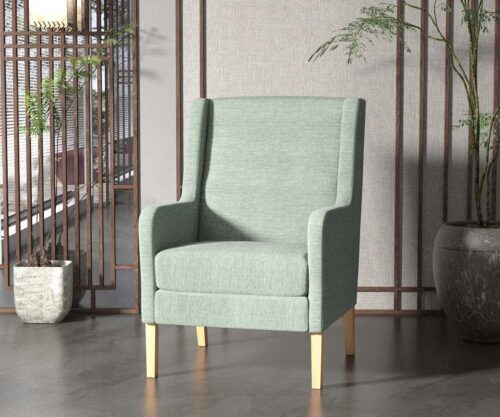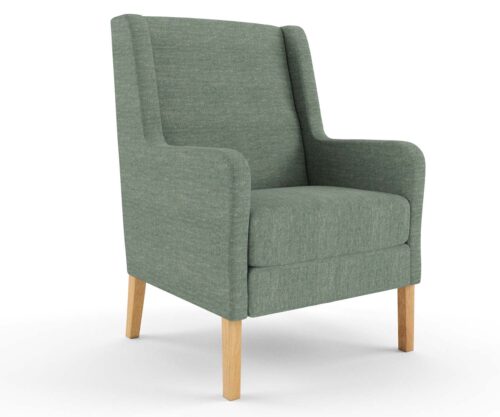Sustainable Furniture 101: A Guide to Sustainable Furniture in Australian Universities

Did you know that furniture disposal makes up 30% of all Australian landfill? Shocking!
When it comes to furniture procurement for Australian universities, sustainability has become a key consideration. A growing number of universities are embracing the concept of sustainable furniture and are updating their furniture procurement policies to reflect this approach.
In this guide, we will explore the world of sustainable furniture, exploring its importance, benefits, and the innovative ways Australian universities are incorporating it into their campuses.
The Significance of Sustainable Furniture
Environmental Impact
Traditional furniture manufacturing often involves the extraction of non-renewable resources, such as timber, and relies heavily on energy-intensive processes. In contrast, sustainable furniture is crafted using eco-friendly materials and methods, significantly reducing its environmental footprint. By opting for sustainable furniture, universities can contribute to the conservation of natural resources and mitigate the negative impacts associated with conventional manufacturing.
Health and Well-being
Sustainable furniture is not only good for the planet but also for the people inhabiting the spaces. Many traditional furniture items contain harmful chemicals and toxins that can adversely affect indoor air quality. Sustainable alternatives prioritize the use of non-toxic materials, creating healthier environments for students, faculty, and staff. This focus on well-being aligns with the commitment of universities to foster spaces that promote both physical and mental health.
Materials and Processes Used in Sustainable Furniture Manufacturing
Sustainable furniture manufacturing involves the use of eco-friendly materials and methods to reduce environmental impact. Here are some common eco-friendly materials and methods employed in the production of sustainable furniture:
- Reclaimed Wood: Reclaimed wood comes from salvaged sources such as old buildings, barns, or discarded furniture. Using reclaimed wood prevents the need for cutting down new trees and gives a second life to materials that might otherwise go to waste.
- Bamboo: Bamboo is a fast-growing and renewable resource that can be harvested in a relatively short period. It is durable, strong, and can be used for various types of furniture. Additionally, bamboo requires minimal pesticides and fertilizers during cultivation.
- Recycled Materials: Incorporating recycled materials, such as recycled metal, plastic, or glass, reduces the demand for virgin resources. Many sustainable furniture manufacturers use recycled materials in their designs, diverting waste from landfills and minimizing the environmental impact of extraction and processing.
- FSC-Certified Wood: Furniture made from wood certified by the Forest Stewardship Council (FSC) ensures that the wood comes from responsibly managed forests. FSC certification promotes sustainable forestry practices, including reforestation and protection of biodiversity.
- Natural Fiber Upholstery: Sustainable furniture often features upholstery made from natural fibers like organic cotton, linen, or hemp. These materials are biodegradable, require fewer pesticides during cultivation, and contribute to a healthier indoor environment.
- Low-VOC and Water-Based Finishes: Volatile Organic Compounds (VOCs) are harmful chemicals found in many conventional finishes and adhesives. Sustainable furniture manufacturers opt for low-VOC or VOC-free finishes and water-based adhesives to reduce indoor air pollution and minimize the release of harmful substances.
- Zero or Low Waste Manufacturing: Adopting zero or low waste manufacturing practices helps minimize the environmental impact of the production process. This involves efficient use of materials, recycling production waste, and finding innovative ways to repurpose or recycle excess materials.
- Energy-Efficient Manufacturing: Sustainable furniture manufacturers aim to reduce energy consumption during the manufacturing process. This can include the use of renewable energy sources, energy-efficient machinery, and streamlined production techniques.
- Modular and Repairable Designs: Creating furniture with modular designs and components facilitates easier repairs and replacements of individual parts. This approach extends the lifespan of the furniture and reduces the overall need for disposal.
- Closed-Loop Systems: Closed-loop systems involve designing products with the end of life in mind. Manufacturers strive to create furniture that can be easily disassembled and recycled, promoting a circular economy where materials are continuously reused.
By incorporating these materials and methods, sustainable furniture manufacturers contribute to a more eco-friendly and responsible industry, aligning with the growing global commitment to environmental stewardship.
The Benefits of Sustainable Furniture
Longevity and Durability
One of the key advantages of sustainable furniture is its durability. By utilizing high-quality materials and construction techniques, these pieces often outlast their conventional counterparts. This longevity not only reduces the frequency of replacements but also minimizes the overall environmental impact associated with furniture production and disposal.
Cost-Effectiveness
While sustainable furniture may initially seem more expensive, the long-term cost savings are considerable. Reduced maintenance and replacement costs, coupled with potential energy savings from the manufacturing process, make sustainable options financially prudent for universities in the long run. Many Australian universities are recognizing this and making strategic investments in sustainable furniture to enhance their campuses sustainably.
Innovations in Sustainable Furniture Implementation
Circular Design
The concept of circular design is gaining traction in the world of sustainable furniture. This approach prioritizes the entire lifecycle of a product, from material sourcing to disposal. By embracing circular design principles, universities can ensure that their furniture is not only eco-friendly but also part of a closed-loop system, minimizing waste and maximizing resource efficiency.
Circular design in furniture manufacturing is characterized by a commitment to creating products with a lifecycle that minimizes waste, promotes sustainability, and considers the entire product journey, from sourcing materials to disposal. Here are some clues that your furniture manufacturer is engaging in circular design:
- Material Sourcing Transparency: A manufacturer practicing circular design will be transparent about the sourcing of their materials. Look for information about the origin of materials, whether they are recycled, reclaimed, or sustainably sourced.
- Use of Recycled or Upcycled Materials: Circular design often involves incorporating recycled or upcycled materials into furniture production. Manufacturers committed to circularity will explicitly mention the use of recycled content in their products.
- Modular and Repairable Designs: Circular design encourages modular designs that allow for easy disassembly and repairs. If your furniture comes with components that can be replaced or repaired independently, it’s a strong indicator of circular thinking.
- Longevity and Durability: Circular design emphasizes creating products with a longer lifespan. If your furniture manufacturer focuses on durability and quality construction, it suggests a commitment to reducing the need for frequent replacements and minimizing waste.
- Take-Back or Buy-Back Programs: Manufacturers engaging in circular design often offer take-back or buy-back programs. These initiatives involve taking back old furniture from customers, refurbishing or recycling it, and incorporating the materials into new products.
- Closed-Loop Systems: Circular design aims for closed-loop systems where materials are continuously reused. Manufacturers may mention their efforts to create closed-loop systems or highlight how they are repurposing waste materials generated during the manufacturing process.
- Certifications and Standards: Look for certifications and adherence to standards related to circular economy principles. For instance, certifications like Cradle to Cradle (C2C) or participation in sustainability initiatives such as the Ellen MacArthur Foundation’s Circular Economy 100 are positive indicators.
- Minimal Packaging Waste: Circular design extends beyond the product itself to packaging. Manufacturers adopting circular principles will strive to minimize packaging waste, using recyclable or biodegradable materials and avoiding excessive packaging.
- Energy-Efficient Manufacturing: Circular design encompasses considerations for energy efficiency. A manufacturer committed to circularity may invest in renewable energy sources for their manufacturing facilities, reducing the overall environmental impact.
- Commitment to Recycling and Responsible Disposal: A circular design approach involves planning for the end of a product’s life. Manufacturers engaged in circular practices will provide guidance on how to responsibly dispose of or recycle their furniture at the end of its useful life.
Collaborations with Local Artisans
Australian universities are increasingly forging partnerships with local furniture manufacturers who specialize in sustainable materials and practices. These collaborations not only support local economies but also infuse a sense of uniqueness and authenticity into the furniture designs. This approach adds character to university spaces and fosters a stronger connection with the surrounding community.
Sustainable Furniture Manufacturing Glossary
- Sustainable Furniture: Furniture produced using eco-friendly materials, manufacturing processes, and design principles that minimize environmental impact and promote long-term sustainability.
- Circular Design: An approach to design that prioritizes creating products with a lifecycle that minimizes waste, encourages durability, and facilitates recycling or repurposing of materials.
- Reclaimed Wood: Wood sourced from salvaged or recycled sources, such as old buildings or furniture, to reduce the demand for newly harvested timber.
- FSC-Certified Wood: Wood that has been certified by the Forest Stewardship Council, ensuring it comes from responsibly managed forests that prioritize environmental, social, and economic sustainability.
- Bamboo: A rapidly renewable resource used in furniture manufacturing due to its fast growth, durability, and minimal environmental impact.
- Recycled Materials: Materials, such as metal, plastic, or glass, that have been recovered or processed from post-consumer or post-industrial waste, reducing the need for virgin resources.
- Low-VOC (Volatile Organic Compounds): Finishes and adhesives with low levels of harmful chemicals that can emit volatile organic compounds, contributing to better indoor air quality.
- Natural Fiber Upholstery: Upholstery made from organic fibers like cotton, linen, or hemp, which are biodegradable and typically grown with minimal use of pesticides.
- Modular Design: Furniture design that includes interchangeable or replaceable components, facilitating easy disassembly, repair, and reconfiguration.
- Closed-Loop System: A system in which materials are continuously recycled or reused, creating a circular flow that minimizes waste and promotes sustainability.
- Zero or Low Waste Manufacturing: Manufacturing processes designed to minimize waste production, either through efficient material use, recycling of production waste, or responsible disposal practices.
- Take-Back Program: Initiatives where furniture manufacturers accept old furniture from customers, often as part of buy-back programs, with the goal of refurbishing, recycling, or repurposing materials.
- Buy-Back Program: Programs where manufacturers purchase used furniture from customers, encouraging recycling and reducing the environmental impact associated with disposal.
- Energy-Efficient Manufacturing: Manufacturing processes that prioritize energy efficiency, often involving the use of renewable energy sources to minimize the environmental footprint.
- Cradle to Cradle (C2C): A certification system that assesses products and materials based on their environmental and social impact, encouraging the development of regenerative and circular systems.
- Upcycled Furniture: Furniture created from discarded or unused materials that are repurposed into new, high-quality products, giving a second life to otherwise wasted resources.
- Life Cycle Assessment (LCA): An evaluation method that assesses the environmental impact of a product throughout its entire lifecycle, from raw material extraction to disposal.
- Greenwashing: Misleading marketing or promotional efforts that falsely claim a product or company is more environmentally friendly than it actually is.
- Sustainability Certification: Certifications, such as third-party labels or standards, that verify a product’s adherence to specific sustainability criteria and practices.
- Biodegradable: Materials that can be broken down naturally by biological processes, minimizing environmental impact and reducing waste.
As Australian universities continue to prioritize sustainability, the integration of sustainable furniture into campus spaces is a natural progression. The benefits, both environmental and practical, make this shift a worthwhile investment. By choosing eco-friendly alternatives, universities not only contribute to a healthier planet but also create spaces that promote the well-being of their students and staff. In the journey towards a more sustainable future, the adoption of sustainable furniture is a crucial step, and Australian universities are leading the way.
Student Accommodation Furniture
Our Australian-made student accommodation furniture is made right here in our Brisbane furniture manufacturing facility.
More News
Sustainable Furniture 101: A Guide to Sustainable Furniture in Australian Universities

Did you know that furniture disposal makes up 30% of all Australian landfill? Shocking!
When it comes to furniture procurement for Australian universities, sustainability has become a key consideration. A growing number of universities are embracing the concept of sustainable furniture and are updating their furniture procurement policies to reflect this approach.
In this guide, we will explore the world of sustainable furniture, exploring its importance, benefits, and the innovative ways Australian universities are incorporating it into their campuses.
The Significance of Sustainable Furniture
Environmental Impact
Traditional furniture manufacturing often involves the extraction of non-renewable resources, such as timber, and relies heavily on energy-intensive processes. In contrast, sustainable furniture is crafted using eco-friendly materials and methods, significantly reducing its environmental footprint. By opting for sustainable furniture, universities can contribute to the conservation of natural resources and mitigate the negative impacts associated with conventional manufacturing.
Health and Well-being
Sustainable furniture is not only good for the planet but also for the people inhabiting the spaces. Many traditional furniture items contain harmful chemicals and toxins that can adversely affect indoor air quality. Sustainable alternatives prioritize the use of non-toxic materials, creating healthier environments for students, faculty, and staff. This focus on well-being aligns with the commitment of universities to foster spaces that promote both physical and mental health.
Materials and Processes Used in Sustainable Furniture Manufacturing
Sustainable furniture manufacturing involves the use of eco-friendly materials and methods to reduce environmental impact. Here are some common eco-friendly materials and methods employed in the production of sustainable furniture:
- Reclaimed Wood: Reclaimed wood comes from salvaged sources such as old buildings, barns, or discarded furniture. Using reclaimed wood prevents the need for cutting down new trees and gives a second life to materials that might otherwise go to waste.
- Bamboo: Bamboo is a fast-growing and renewable resource that can be harvested in a relatively short period. It is durable, strong, and can be used for various types of furniture. Additionally, bamboo requires minimal pesticides and fertilizers during cultivation.
- Recycled Materials: Incorporating recycled materials, such as recycled metal, plastic, or glass, reduces the demand for virgin resources. Many sustainable furniture manufacturers use recycled materials in their designs, diverting waste from landfills and minimizing the environmental impact of extraction and processing.
- FSC-Certified Wood: Furniture made from wood certified by the Forest Stewardship Council (FSC) ensures that the wood comes from responsibly managed forests. FSC certification promotes sustainable forestry practices, including reforestation and protection of biodiversity.
- Natural Fiber Upholstery: Sustainable furniture often features upholstery made from natural fibers like organic cotton, linen, or hemp. These materials are biodegradable, require fewer pesticides during cultivation, and contribute to a healthier indoor environment.
- Low-VOC and Water-Based Finishes: Volatile Organic Compounds (VOCs) are harmful chemicals found in many conventional finishes and adhesives. Sustainable furniture manufacturers opt for low-VOC or VOC-free finishes and water-based adhesives to reduce indoor air pollution and minimize the release of harmful substances.
- Zero or Low Waste Manufacturing: Adopting zero or low waste manufacturing practices helps minimize the environmental impact of the production process. This involves efficient use of materials, recycling production waste, and finding innovative ways to repurpose or recycle excess materials.
- Energy-Efficient Manufacturing: Sustainable furniture manufacturers aim to reduce energy consumption during the manufacturing process. This can include the use of renewable energy sources, energy-efficient machinery, and streamlined production techniques.
- Modular and Repairable Designs: Creating furniture with modular designs and components facilitates easier repairs and replacements of individual parts. This approach extends the lifespan of the furniture and reduces the overall need for disposal.
- Closed-Loop Systems: Closed-loop systems involve designing products with the end of life in mind. Manufacturers strive to create furniture that can be easily disassembled and recycled, promoting a circular economy where materials are continuously reused.
By incorporating these materials and methods, sustainable furniture manufacturers contribute to a more eco-friendly and responsible industry, aligning with the growing global commitment to environmental stewardship.
The Benefits of Sustainable Furniture
Longevity and Durability
One of the key advantages of sustainable furniture is its durability. By utilizing high-quality materials and construction techniques, these pieces often outlast their conventional counterparts. This longevity not only reduces the frequency of replacements but also minimizes the overall environmental impact associated with furniture production and disposal.
Cost-Effectiveness
While sustainable furniture may initially seem more expensive, the long-term cost savings are considerable. Reduced maintenance and replacement costs, coupled with potential energy savings from the manufacturing process, make sustainable options financially prudent for universities in the long run. Many Australian universities are recognizing this and making strategic investments in sustainable furniture to enhance their campuses sustainably.
Innovations in Sustainable Furniture Implementation
Circular Design
The concept of circular design is gaining traction in the world of sustainable furniture. This approach prioritizes the entire lifecycle of a product, from material sourcing to disposal. By embracing circular design principles, universities can ensure that their furniture is not only eco-friendly but also part of a closed-loop system, minimizing waste and maximizing resource efficiency.
Circular design in furniture manufacturing is characterized by a commitment to creating products with a lifecycle that minimizes waste, promotes sustainability, and considers the entire product journey, from sourcing materials to disposal. Here are some clues that your furniture manufacturer is engaging in circular design:
- Material Sourcing Transparency: A manufacturer practicing circular design will be transparent about the sourcing of their materials. Look for information about the origin of materials, whether they are recycled, reclaimed, or sustainably sourced.
- Use of Recycled or Upcycled Materials: Circular design often involves incorporating recycled or upcycled materials into furniture production. Manufacturers committed to circularity will explicitly mention the use of recycled content in their products.
- Modular and Repairable Designs: Circular design encourages modular designs that allow for easy disassembly and repairs. If your furniture comes with components that can be replaced or repaired independently, it’s a strong indicator of circular thinking.
- Longevity and Durability: Circular design emphasizes creating products with a longer lifespan. If your furniture manufacturer focuses on durability and quality construction, it suggests a commitment to reducing the need for frequent replacements and minimizing waste.
- Take-Back or Buy-Back Programs: Manufacturers engaging in circular design often offer take-back or buy-back programs. These initiatives involve taking back old furniture from customers, refurbishing or recycling it, and incorporating the materials into new products.
- Closed-Loop Systems: Circular design aims for closed-loop systems where materials are continuously reused. Manufacturers may mention their efforts to create closed-loop systems or highlight how they are repurposing waste materials generated during the manufacturing process.
- Certifications and Standards: Look for certifications and adherence to standards related to circular economy principles. For instance, certifications like Cradle to Cradle (C2C) or participation in sustainability initiatives such as the Ellen MacArthur Foundation’s Circular Economy 100 are positive indicators.
- Minimal Packaging Waste: Circular design extends beyond the product itself to packaging. Manufacturers adopting circular principles will strive to minimize packaging waste, using recyclable or biodegradable materials and avoiding excessive packaging.
- Energy-Efficient Manufacturing: Circular design encompasses considerations for energy efficiency. A manufacturer committed to circularity may invest in renewable energy sources for their manufacturing facilities, reducing the overall environmental impact.
- Commitment to Recycling and Responsible Disposal: A circular design approach involves planning for the end of a product’s life. Manufacturers engaged in circular practices will provide guidance on how to responsibly dispose of or recycle their furniture at the end of its useful life.
Collaborations with Local Artisans
Australian universities are increasingly forging partnerships with local furniture manufacturers who specialize in sustainable materials and practices. These collaborations not only support local economies but also infuse a sense of uniqueness and authenticity into the furniture designs. This approach adds character to university spaces and fosters a stronger connection with the surrounding community.
Sustainable Furniture Manufacturing Glossary
- Sustainable Furniture: Furniture produced using eco-friendly materials, manufacturing processes, and design principles that minimize environmental impact and promote long-term sustainability.
- Circular Design: An approach to design that prioritizes creating products with a lifecycle that minimizes waste, encourages durability, and facilitates recycling or repurposing of materials.
- Reclaimed Wood: Wood sourced from salvaged or recycled sources, such as old buildings or furniture, to reduce the demand for newly harvested timber.
- FSC-Certified Wood: Wood that has been certified by the Forest Stewardship Council, ensuring it comes from responsibly managed forests that prioritize environmental, social, and economic sustainability.
- Bamboo: A rapidly renewable resource used in furniture manufacturing due to its fast growth, durability, and minimal environmental impact.
- Recycled Materials: Materials, such as metal, plastic, or glass, that have been recovered or processed from post-consumer or post-industrial waste, reducing the need for virgin resources.
- Low-VOC (Volatile Organic Compounds): Finishes and adhesives with low levels of harmful chemicals that can emit volatile organic compounds, contributing to better indoor air quality.
- Natural Fiber Upholstery: Upholstery made from organic fibers like cotton, linen, or hemp, which are biodegradable and typically grown with minimal use of pesticides.
- Modular Design: Furniture design that includes interchangeable or replaceable components, facilitating easy disassembly, repair, and reconfiguration.
- Closed-Loop System: A system in which materials are continuously recycled or reused, creating a circular flow that minimizes waste and promotes sustainability.
- Zero or Low Waste Manufacturing: Manufacturing processes designed to minimize waste production, either through efficient material use, recycling of production waste, or responsible disposal practices.
- Take-Back Program: Initiatives where furniture manufacturers accept old furniture from customers, often as part of buy-back programs, with the goal of refurbishing, recycling, or repurposing materials.
- Buy-Back Program: Programs where manufacturers purchase used furniture from customers, encouraging recycling and reducing the environmental impact associated with disposal.
- Energy-Efficient Manufacturing: Manufacturing processes that prioritize energy efficiency, often involving the use of renewable energy sources to minimize the environmental footprint.
- Cradle to Cradle (C2C): A certification system that assesses products and materials based on their environmental and social impact, encouraging the development of regenerative and circular systems.
- Upcycled Furniture: Furniture created from discarded or unused materials that are repurposed into new, high-quality products, giving a second life to otherwise wasted resources.
- Life Cycle Assessment (LCA): An evaluation method that assesses the environmental impact of a product throughout its entire lifecycle, from raw material extraction to disposal.
- Greenwashing: Misleading marketing or promotional efforts that falsely claim a product or company is more environmentally friendly than it actually is.
- Sustainability Certification: Certifications, such as third-party labels or standards, that verify a product’s adherence to specific sustainability criteria and practices.
- Biodegradable: Materials that can be broken down naturally by biological processes, minimizing environmental impact and reducing waste.
As Australian universities continue to prioritize sustainability, the integration of sustainable furniture into campus spaces is a natural progression. The benefits, both environmental and practical, make this shift a worthwhile investment. By choosing eco-friendly alternatives, universities not only contribute to a healthier planet but also create spaces that promote the well-being of their students and staff. In the journey towards a more sustainable future, the adoption of sustainable furniture is a crucial step, and Australian universities are leading the way.
Student Accommodation Furniture
Our Australian-made student accommodation furniture is made right here in our Brisbane furniture manufacturing facility.
Commercial furniture by room
Based in Brisbane, we’re an Australian manufacturer of aged care furniture, retirement living furniture, hospital & healthcare furniture, hotel & accommodation furniture and student accommodation furniture. We also supply a range of commercial office furniture.
Discover the FHG Look Book: Your Source of Inspiration for Quality Australian-Made Commercial Furniture
- Quality Craftsmanship: See why we’ve been a trusted partner for over 25 years.
- Local Excellence: Learn how our Brisbane team ensures the highest standards.
- Inspiration and Ideas: Find innovative furniture solutions for any environment.
Don’t miss the opportunity to transform your commercial space with FHG’s expertly crafted furniture. Download the FHG Look Book today and start your journey towards exceptional design and quality.

